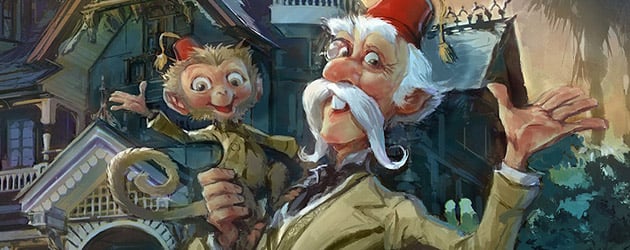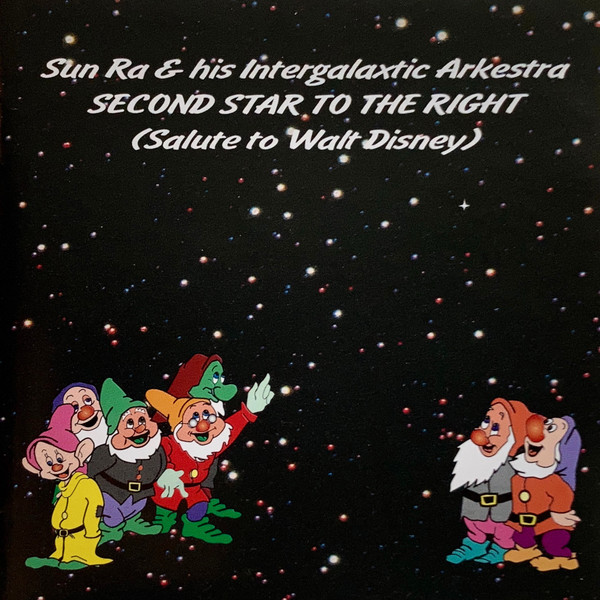10 Songs You’ll Hear in Disney California Adventure: San Fransokyo Edition
In the summer of 2023, San Fransokyo Square opened at Disney California Adventure, allowing Guests to step into the world of Big Hero 6. The first animated Disney film to feature Marvel characters, the movie was loosely based on the Big Hero 6 team first introduced in the 1998 comic book Sunfire & Big Hero 6.
The theming in the area lets you truly experience the world of Baymax, Hiro, and the rest of the team, and music plays a huge role in bringing it to life. To provide the right atmosphere, Disney leaned heavily into the world of J-Pop (Japanese pop music), as well as some of the music the company had previously created for Tokyo Disneyland.
Here are 10 of the songs you’ll hear while exploring the area.
PonPonPon – Kyary Pamyu Pamyu
Released in 2011, “PonPonPon” was an immediate hit for singer Kyary Pamyu Pamyu. Born in Nishitōkyō, Tokyo, Japan, she began modeling and appearing as a junior idol at the age of 12, shortly after launching a career as a fashion blogger.
“PonPonPon” was her first single, and she has cited artists like Gwen Stefani and Katy Perry as influences. It’s music video featured an explosion of “kawaii” (or “cute”) culture and received art direction from Sebastian Masuda (whose work can be seen by Disney fans at the Bijutsu-Kan Gallery in Epcot). A 2019 article in The Japan Times cited the song as one of the most influential of the 2010s.
きゃりーぱみゅぱみゅ – PONPONPON , Kyary Pamyu Pamyu – PONPONPON (youtube.com)
Marai no Museum – Perfume
The Japanese pop techno girl group Perfume formed in 2000 and released their first single, “Gulp Down a Good Luck Charm,” two years later. Their first full album, Game, was released in 2008 and reached the top of the charts in Japan.
“Marai no Museum” (or “Future Museum”) was released as the third single from their fourth album, Level 3. The song was written by Yasutaka Nakata, a music producer and DJ who previously formed the band Capsule in 1997.
Certified Gold by the Recording Association of Japan, the track was also selected as the ending theme song for the animated film Doraemon: Nobita’s Secret Gadget Museum.
Perfume – Mirai no Museum (Official Music Video) (youtube.com)
Go Way – Silent Siren
In 2010, amatuer fashion models Sumire Yoshida, Hinako Umemura, Aina Yamauchi, and Ayana Sogawa formed the band Silent Siren. Two years later they released a mini-album titled Sai Sai, which included the song “All Right (‘Ima’ o Kakeru).” The track would also serve as the official song for Agestock 2011, the largest college student event ever held in Japan.
“Go Way” was released in 2018 and was included as the third track on their 2019 album 31313. The track also became the ending theme for the anime Shinkansen Henkei Robo Shinkalion THE ANIMATION.
Escapade – Official Hige Dandism
Official Hige Dandism, whose translated named means “Manly Moustache” are a piano pop band who made their major label debut in 2018. Their first single “No Doubt” debuted in the streaming Top 10, while the song “Pretender” later rocketed out to 100 million streams, joining Aimyon’s “Marigold,” Ed Sheeran’s “Shape of You,” and DAOKO x Kenshi Yonezu’s “Uchiagi Hanabi” as the only songs to reach the milestone since the chart’s 2017 inception.
“Escapade” was released as the third track on their debut album Escaparade. Their follow-up album, Traveler, would achieve 3x Platinum status in physical sales and Gold status in digital.
[LIVE] 오피셜히게단디즘(Official髭男dism) – ESCAPADE (youtube.com)
Peace Sign – Kenshi Yonezu
Kenshi Yonezu began his musical career performing under the name Hachi. His early musical releases featured the use of Vocaloid, a singing voice synthesizer. During this time he also started the blog Tekitō Edda. His song “Musunde Hiraite Rasetsu to Mukuro” was a major success, receiving over 1,000,000 streams.
In 2017, he released the album Bootleg. It featured singles like “Uchiagi Hanabi,” “Loser,” “Orion,” and “Peace Sign.” The album would go on to win “Album of the Year” at the 60th Japan Record Awards. The single “Peace Sign” also became the theme song for the second season of My Hero Academia.
Mela! – Ryokuoushoku Shakai
Green-Yellow Society, as the band is known in English, formed in their high school’s light music club. They held their first performance on July 4, 2012 and took their name from mishearing the words “ryokuoushoku yasai” which translates to “green-yellow vegetables.”
The song “Mela!” was released in April of 2020 as a forerunner to the release of their album Singalong. They later performed the song on 2022 edition of the annual NHK Kōhaku Uta Gassen, a New Year’s Eve special and competition. It was also used in the television show Sukkiri for “Hitotsu ni Narou! Dance One Project.”
It’s music video featured a villainous wolf who changed his destiny.
緑黄色社会 『Mela!』Music Video / Ryokuoushoku Shakai – Mela! (youtube.com)
Halzion – Yoasobi
Pop duo Yoasobi is made up of the duo Ayase and Lilas Akuta. The pair originally released music using the slogan “novel into music.” They created songs based on short stories published on the website Monogatary.com.
They became increasingly popular during the COVID-19 pandemic, particularly with the release of the song “Yoru ni Kakeru.” The track spent six weeks (non-consecutively) atop the Billboard Hot 100.
“Halzion” was released on their debut EP The Book. The song was based on Soredemo, Happy End by Hashizume Shunki. A version in “Simlish” (the made-up of language of The Sims video game franchise) appeared in The Sims 4.
YOASOBI「ハルジオン・Halzion」Official Music Video (youtube.com)
B-A-Y-M-A-X
Created for The Happy Ride with Baymax for Tokyo Disneyland, the song B-A-Y-M-A-X was written by Adam Gubman. It is one of four tracks from the ride’s soundtrack which appears in the music loop for San Fransokyo.
In addition to his work for Disney, Gubman has written music over 600 video games. He has also provided music for television and film projects like Galavant, and Baywatch. He also worked as a producer for the smash hit “This is Me” from The Greatest Showman.
Writing about his work on the project, Gubman said, “I had the extreme pleasure of writing a song for it…THANK YOU MATT WALKER, Yaron Spiwek (my co-producer, and Exec producer of the score!!!) and Jonathan Friday for letting me be my crazy self and have a blast doing it, the incredible singers and other musicians involved, and the whole crew at Imagineering. It’s an ADORABLE, sweet, fun, ride with a lot of energy and style!”
Like the other tracks from The Happy Ride with Baymax, the version heard in San Fransokyo is instrumental.
One Sweet Ride (Cool Ride)
Another track from The Happy Ride with Baymax, “One Sweet Ride (Cool Ride)” was written by the duo of Jan Andersson & Peter Heden.
The pair have written music for a number of acts, including reaching #1 on the charts with the song “Shori no hi Ma-de” for the Japanese boy band Sexy Zone (now known as Timelesz). They have also written songs for South Korean boy band The Boyz.
While their work has remained relatively unknown in their home country of Sweden, they’ve achieved massive success. As Heden recalled, “Among our friends, no one has really had any idea of what we’re doing. It’s like two different worlds. While we sit in our safe studio, all sorts of things are going on over there.”
A New Angle (New Perspective)
It took a team to write “A New Angle (New Perspective)” for The Happy Ride with Baymax. The track is credited to Eve Nelson, Guilio Cercato, Caitlin Rosenquist, and Annika Wells.
A music producer and song writer, Eve Nelson has worked on television programs including This is Us, High School Musical: The Series, Little Fires Everywhere, and more. Her work earned her a Daytime Emmy Award in 2018 and a 2015 nomination.
Guilio Cercato is a music producer, composer, and guitarist whose work has been featured on television and film, while Caitlin Rosenquist is the co-founder of Solid Ground Sound (along with Eve Nelson). Her bio notes that she, “she was Creative Director at ABC’s in-house music library for 10 years, collaborating with composers on new music production, as well as providing music supervision to clients.”
For her part, the work of Annika Wells has written for pop titans like BTS and The Jonas Brothers. She notes, “Songwriting has always been my original love. Since I was about eight years old, I’ve been writing music and have always known that’s what I wanted to do. I absolutely love writing for myself and I also love helping other people’s stories come to light. Songwriting in any capacity is my passion.”









